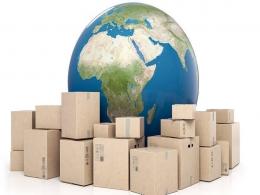Wherever you are on the World Wide Web, you are bound to find online advertisements. They wink at you, slide in from the sidebars and ignite your desire. And it can be anything under the sun – from bringing you face to face (virtually, of course) with the golden ‘Nano’ to giving you a reminder that a gourmet dinner is just a phone call away.
Today, an advertisement does not exist just to inform consumers or showcase creativity. Instead, it’s your most convenient link to direct interaction with the brand. Ads have become relevant, specific (ad-men call it targeted advertising) and unlike TV ads, offer a call to action. If it is a website, you can try it out; if it’s the latest handset, you can simply click and read up the specs and features. In a two-part series, Techcircle dissects the digital marketing business as it stands today and tries to decipher where it is headed.
Surge In Display Media
Search advertising has dominated the market for online advertising for years with Google taking the lion’s share. Google AdWords and AdSense have helped many Internet users monetise their blogs, and websites have used keyword advertising to direct online users towards their platforms with success. But slowly, videos, pictures and interactive ads have invaded the sites and buyers are taking cognizance of their growing might in driving demand.
Newer formats of advertising such as flash images and videos generate demand for physical products with their polish and appeal. “Display ads are all about branding your provider and creating demand, not just redirecting consumers from a search engine. If you show a video of a cell phone, there is a lot more power to it – it is more desirable and can create demand for the product,” says Tyroo’s vice-president and India business head Nitin Chowdhary. Tyroo is the pioneer of ad networks in India and connects publishers with advertisers through a self-serve technology platform.
There has been a significant rise in display ads over the past two years because of improved effectiveness. “Display ads are now becoming as accountable as search advertising,” says Chowdhury. “The industry, as a whole, has figured out how to bring more relevance and direction to the ads. Digital ad agencies have started to spot the advantages of using multiple ad campaigns and placing different ads on the same spot and the fundamental thinking about display industry is undergoing a change,” he added.
Debadutta Upadhyaya, VP – India, Vdopia, agrees, “Online advertising leads to two-way communication instead of the one-sided messages conveyed by the traditional media.” Vdopia is also an ad network that recently launched a new file format, .VDO that enables advertisers and publishers to seamlessly run video-enabled ads on the mobile web without flash or plug-ins.
Brands Embracing Online Ads
Compared to five years ago, brands are now more comfortable with online advertising. “They have moved from experimentation to strategic use of digital media. The market has geared up pretty well and brands are acknowledging potential of digital advertising. It has evolved into one of the most explored new mediums available today,” says Debadutta. Vdopia’s clients include Ford, HP, Intel, Dell, IBM, Samsung, Nokia, LG, Vodafone and Idea Cellular. Tyroo has added 100 new customers over the year including Michelin and Swift Tourism and also counts Airtel, General Motors and Aircel as its clients.
Banking, financial services and insurance (BFSI) and the retail industry – the biggest industries in the country – are also the biggest spenders on online ads. But education, telecommunication, travel and automotive brands are rising fast and are projected to claim up to 39 per cent of the total market share, says Upadhyaya. However, FMCG and consumer durables brands are yet to accelerate their presence on digital advertising space.
Newly sprouted e-commerce firms are also spending as much as bigger brands on advertising. “Those who are spending have deep pockets and are creating a new format of retailing. They are talking about the convenience of online shopping and are offering exciting offers and return policies to generate interest of consumers,” says Chowdhury. E-commerce sites such as Myntra and Flipkart are using TV ads to build brand awareness and draw the offline crowd. Online, they spend on ads to engage with their existing consumers using popular youth culture sites.
Online spends are increasing proportionally to the spread of the Internet in the country. With the top 100 brands, the percentage spends online sits between 8-10 per cent of their ad budgets, although in a fragmented way, reports Vdopia. And in India, this is between 3 per cent and 10 per cent. However, Chowdhury claims that in some cases, he has noticed a shift from offline budgets to online.
Costs Of Developing Online Ads & RoE
Costs are not dramatically different from traditional media advertising. “It is a misapprehension that cost of producing an online ad is lower than a television ad. Many repurpose the TV ad, but the cost of separately developing a TV campaign is as high as creating a video,” said Chowdhury. Currently, the budgets are split 90:10 between offline and online advertising with the cost of creative commonly spread.
Conversions are higher online and hence RoI is higher, claims Chowdhury, offering the example of an unnamed insurance client of Tyroo’s that conducted an ad campaign in the second quarter of this year. The insurance agency apparently witnessed an offline RoI that was ten times lower than the online campaign.
Debadutta points to a shift from ROI (return on investment) to ROE (return on engagement), which is fuelled by fresh ad formats being introduced on the mobile. “Apart from plain-vanilla WAP banner ads on the mobile, brands are opting for more interactive options such as pre- or post- or mid-roll ads on mobiles. You will also find Talk2Me Ads on online and mobiles, dynamic skin branding and product placement ad formats. These ads ensure engagement and interactivity with users; so brands have an additional platform to reach out to them,” she said.
Challenging Traditional Media
Television scores really well on creating awareness and reaching out to the masses while digital advertising is being positioned as more of a targeted marketing play.
“Globally, Internet users consider online advertising to be more relevant than traditional media such as radio, television, newspapers and magazines. And this trend is now sweeping across India. Online advertising plays a significant role in bringing about engagement and interaction with the brand,” says Debadutta.
Sunil Punjabi, Chief Revenue Officer of NetworkPlay states that no medium has surpassed the sheer volume of people that television reaches today. One cannot gain the same reach with the online medium, given the low Internet access density in the country. Currently, TV reaches 794 million households, compared with 12.5 million broadband Internet users in India (according to TRAI, July 2011) or comScore’s total of 40 million Internet users.
Online is challenging print media advertising. “If we go by Google’s calculation of 100 million Internet users in India, it is definitely a bigger reach than some English dailies,” said Chowdhury. Online ad men unanimously say that consumer engagement platforms such as Facebook and Twitter are attracting advertisers towards the medium and ad spends are set to rise with increase in capabilities, reach and new technologies.






